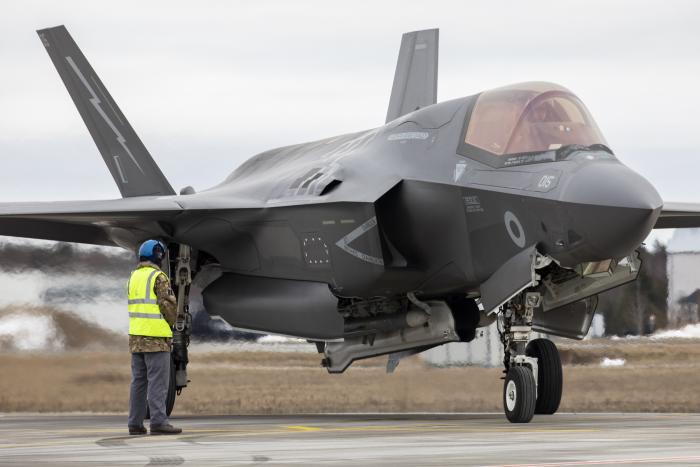The introduction of the UK’s Lightning Force is being held back due to a lack of trained ground crew personnel; a British government minister has revealed.
Alex Chalk, the Minister for Defence Procurement at the UK Ministry of Defence (MOD), said that work is underway to train more maintenance personnel to work on the UK’s fleet of Lockheed Martin F-35B Lightning II fifth-generation multi-role stealth fighters. In a letter to the UK government’s Defence Select Committee, Chalk said: “Lightning Force growth remains slower than planned due to insufficient number of RAF [Royal Air Force] and RN [Royal Navy] aircraft maintainers. Significant work has been completed to fully understand the impacts of this reduced growth rate and the changes required to the numbers of personnel on the Force.”

He added that action was now being taken and the problem should be addressed this year. “Despite these Force growth challenges, since January 2022, 207 Squadron (the Operational Conversion Unit) have graduated eight F-35B pilots for the Force; four pilots previously qualified on other Combat Air platforms, two ab-initio pilots and two F-35A pilots on exchange from the Royal Australian Air Force and the United States Air Force,” he said.
He also reaffirmed the commitment to the order last year of a further 26 Tranche 2 F-35Bs, which will eventually bring the total Lightning Force fleet up to 74 aircraft and the ability to create a third frontline squadron in 2033. Chalk continued: “It also extends the Out of Service Date (OSD) of UK F-35B to 2069 to align the OSD with the Queen Elizabeth-class carriers. The first 48 aircraft (Tranche 1) continue to be delivered as scheduled, with 30 aircraft received (as of December 2, 2022), and three remain in the US for test and evaluation. Tranche 1 deliveries will be complete by the end of 2025.”

The minister added: “The next key programme milestone is the stand up of 809 Naval Air Squadron in 2023; it will further mature to deliver an operational capability in 2025. Lightning Force Final Operating Capability is still predicted to be achieved in 2025 and, beyond Final Operating Capability, the next significant operational capability will occur in 2028 with UK weapons (Meteor and SPEAR 3) being fielded on the UK’s frontline.”
During Operation Fortis – the first operational deployment of HMS Queen Elizabeth (R08) under Carrier Strike Group 21 (CSG21) – eight F-35Bs from the RAF’s No 617 Squadron ‘The Dambusters’ were joined by ten examples from the US Marine Corps’ (USMC’s) Marine Fighter Attack Squadron 211 (VMFA-211) ‘Wake Island Avengers’ for the duration of the voyage. While deployed, the F-35 Joint Force found that the USMC was using more maintenance personnel than No 617 Squadron was. It was one of the main lessons learnt by the RAF and RN from the tour and the UK has obviously opted to increase the number of maintenance personnel on the back of their findings.

